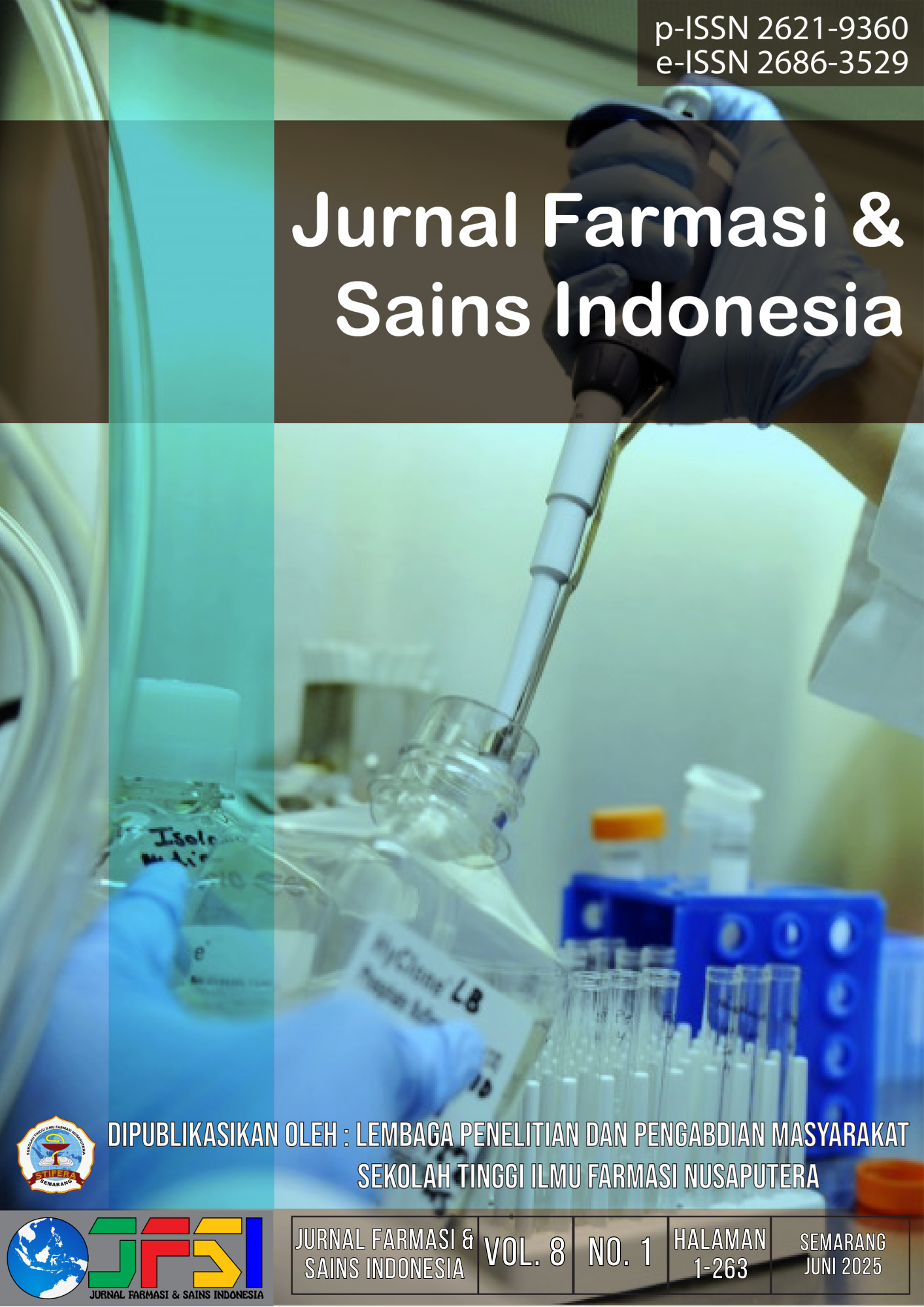Formulation and evaluation of physical properties of shaving cream extracted from turmeric rhizome (Curcuma longa Linn.)
Main Article Content
Abstract
The hair follicle is an unavoidable part of the skin and its growth can make some people feel uncomfortable. The use of shaving cream can help the shaving process, but daily use can cause the skin to become dry. Turmeric (Curcuma longa Linn.) is often used in cosmetics because it has antioxidant and anti-inflammatory properties that maintain moisture and reduce skin redness. Curcumin in turmeric also has antiandrogenic effects that can remove fine hair. This study uses curcumin contained in turmeric as the active substance of shaving cream which has a concentration of 0.1%; 0.25%; 0.5%. Antioxidant activity testing was carried out with DPPH radical scavenging (2.2-diphenyl-1-picylhydrazyl) resulting in IC50 on turmeric extract of 94.63 ppm. The results of phytochemical screening on extracts are known to contain secondary metabolites that were successfully analyzed were Flavonoids, Alkaloids, Triterpenoids, Tannins, Anthraquinones, and Polyphenols. The physical evaluation of turmeric rhizome extract shaving cream preparation meets the requirements, except for the pH test. The results obtained IC50 values of turmeric rhizome extract shaving cream are 1377.78 ppm in F1; 1591.55 ppm in F2; and 1637.93 ppm in F3, so it is still classified as very weak and less effective. In the skin moisture test on 10 respondents with 5 women and 5 men there was an increase in % moisture after the use of shaving cream on days 1, 3, 5 and 7.

